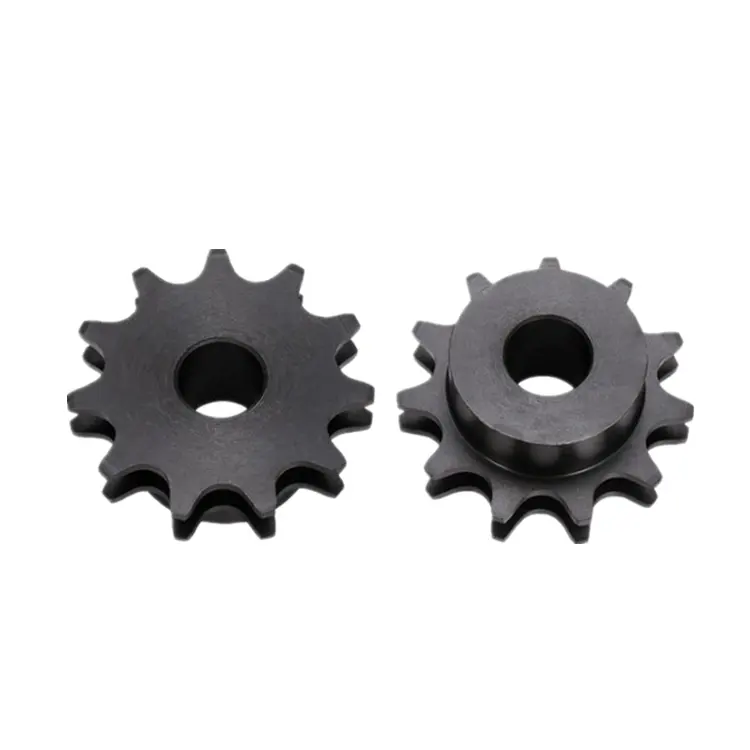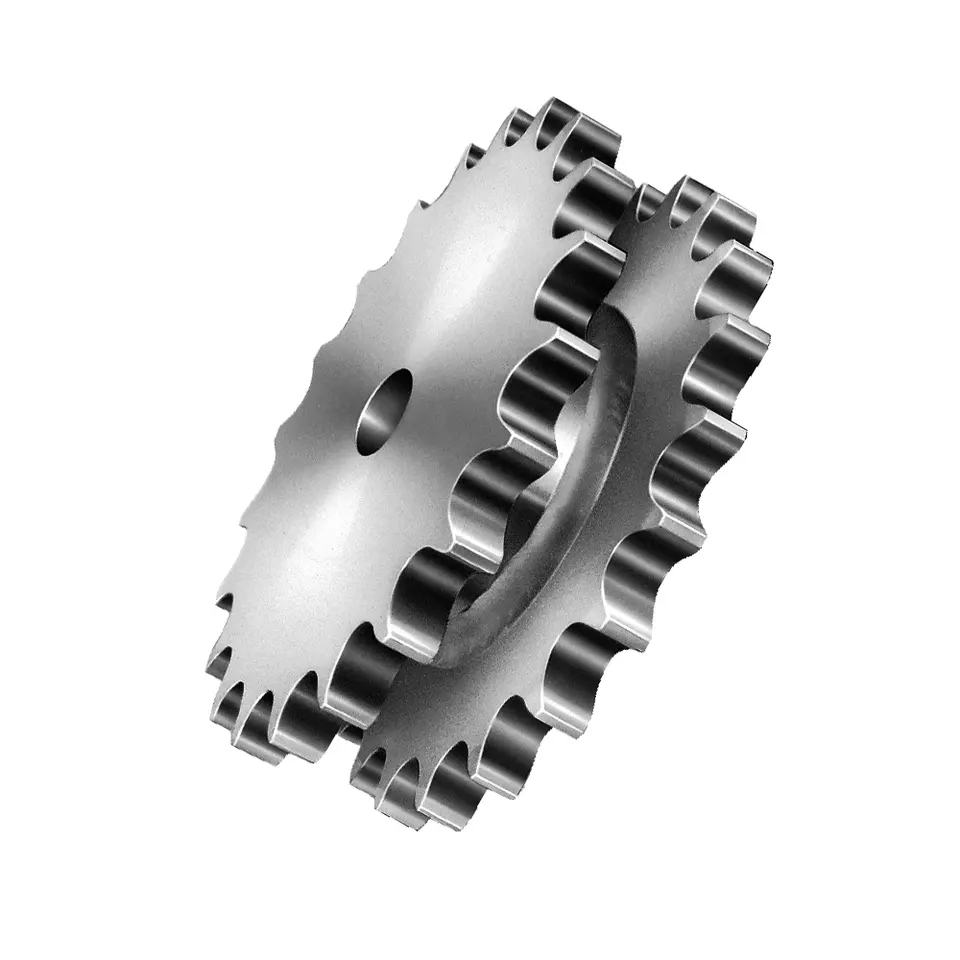Product Description
Product Parameters
| Item | Value |
| Application | Motorcycle spare parts |
| Category | Motorcycle chain |
| Classify | Drive chains |
| Place of origin | ZheJiang ,China |
| Material | 45 # steel |
| Size | 428H-116L / 428H-108L / 420H-104L etc, |
| Weight | 0.76 kg ~1.15 kg |
| Color | Black / Natural / Gold / Silver |
| Type | Popular |
| Feature | Strong |
| Quality | A grade / ordinary grade |
| OEM service | Available |
| Brand name | Customized |
| Logo | QVY / OEM |
| Delivery time | A).25 days after receiving payment / B).Pls contact with us |
| Shipping port | ZheJiang / Customer request |
| Supply ability | 90,000 pieces per Month |
Product Description
Motorcyle Sprocket
Company Profile
ZheJiang Zhenghuang Tire Co.,Ltd. was established in 2002. The company is located in Dasanzhou Industrial Zone in HangZhou Xihu (West Lake) Dis. county, ZheJiang Province.
Zhenghuang Tire has been engaging in rubber products research and development since 2002, carrying out a business mode that research, production and sales concept are integrated together. The main products are Motorcycle and Electric bicycle tires. Over the past 20 years, the company has expanded its scales step by step and become a comprehensive company that specialize in manufacture and sales of tire, motorcycle, bicycle accessories and children toys. Our products, loved and well evaluated by our customers, have been sold to around 40 countries all around the world such as America, Africa and South-East countries.
Striving for excellence is the spirit of our company. We adhere to the object that provides the best products to our customers and always put them first. All our workers of Zhenghuang sincerely invite global partners to cooperate with us and establish a bright future together!
Packaging & Shipping
Certifications
FAQ
Q:How about your delivery time?
A:Usually the delivery time is 15-25days. and 7days is popular time for main main sizes.
Q:How many is your min order?
A:1000pcs
Q:What is your payment terms?
A:1). 30% TT deposit, the balance should be paid against copy of B/L after delivery.
2). By irrevocable L/C at sight.
3). Other payment can be negotiated.
Q:How about the warranty?
A:We have tyre warranty according to the type of product, you can ask our sales for details.
Q: How do you guarantee quality for your tires?
A: We have after service claim agreements and all of us will strictly follow it. Once quality issue occurs, we will refer to this document and make a compensation accordingly.
Q: Can you provide samples for test before we place order?
A: If you need ,we can provide samples at lower cost for testing before order placed.
If there are any more questions, please feel free to contact us! We will do our fast reply !
/* March 10, 2571 17:59:20 */!function(){function s(e,r){var a,o={};try{e&&e.split(“,”).forEach(function(e,t){e&&(a=e.match(/(.*?):(.*)$/))&&1
| After-sales Service: | Yes |
|---|---|
| Warranty: | 1 Year |
| Type: | Chain |
| Material: | Steel |
| Certification: | ISO9001:2001, CCC, SONCAP, CE |
| Number of Row: | Single Row |
| Samples: |
US$ 0/Piece
1 Piece(Min.Order) | |
|---|
| Customization: |
Available
| Customized Request |
|---|

wheel sprocket System in Heavy Machinery and Industrial Equipment
Yes, a wheel sprocket system is commonly used in heavy machinery and industrial equipment for power transmission and motion control. The wheel sprocket configuration is a versatile and efficient method of transmitting rotational force between two shafts.
In heavy machinery and industrial equipment, the wheel is typically attached to one shaft, while the sprocket is mounted on another shaft. A chain or a toothed belt is wrapped around the wheel sprocket, connecting them. When the wheel is rotated, the chain or belt engages with the sprocket, causing the sprocket and the connected shaft to rotate as well. This mechanism allows the transfer of power from one shaft to the other, enabling various components and parts of the machinery to function.
Common applications of the wheel sprocket system in heavy machinery include:
- Construction Machinery: Wheel loaders, excavators, cranes, and other construction equipment often use wheel sprocket systems for efficient power transmission in various moving parts.
- Material Handling Equipment: Forklifts, conveyor systems, and other material handling equipment utilize wheel sprocket configurations to move goods and materials smoothly and reliably.
- Mining Equipment: Mining machinery, such as drilling rigs and conveyors, often incorporate wheel sprocket assemblies for power transmission in challenging environments.
- Agricultural Machinery: Tractors, combines, and other agricultural equipment use wheel sprocket systems to drive various components like wheels and harvesting mechanisms.
- Industrial Robotics: Robots and automated systems in manufacturing often utilize wheel sprocket setups for precise motion control and efficient power transmission.
One of the key advantages of the wheel sprocket system is its ability to handle heavy loads and transmit power over long distances. It is a reliable and cost-effective method of power transmission in various industrial settings. However, proper maintenance and alignment are crucial to ensuring the system’s optimal performance and longevity.
Overall, the wheel sprocket system is a widely used and effective power transmission solution in heavy machinery and industrial equipment, offering versatility and efficiency in a range of applications.

Temperature Limits for wheel sprocket System’s Operation
The temperature limits for a wheel sprocket system’s operation depend on the materials used in the construction of the components. Different materials have varying temperature tolerances, and exceeding these limits can lead to reduced performance, premature wear, and even system failure.
Here are some common materials used in wheel sprocket systems and their general temperature limits:
- Steel: Steel sprockets and wheels, which are widely used in many applications, typically have a temperature limit ranging from -40°C to 500°C (-40°F to 932°F). However, the specific temperature range may vary based on the grade of steel and any coatings or treatments applied.
- Stainless Steel: Stainless steel sprockets and wheels offer improved corrosion resistance and can withstand higher temperatures than regular steel. Their temperature limit is typically between -100°C to 600°C (-148°F to 1112°F).
- Plastics: Plastic sprockets and wheels are commonly used in low-load and low-speed applications. The temperature limit for plastic components varies widely depending on the type of plastic used. In general, it can range from -40°C to 150°C (-40°F to 302°F).
- Aluminum: Aluminum sprockets and wheels have a temperature limit of approximately -40°C to 250°C (-40°F to 482°F). They are often used in applications where weight reduction is critical.
It’s essential to consult the manufacturer’s specifications and material data sheets for the specific components used in the wheel sprocket system to determine their temperature limits accurately. Factors such as load, speed, and environmental conditions can also influence the actual temperature tolerance of the system.
When operating a wheel sprocket system near its temperature limits, regular monitoring and maintenance are necessary to ensure the components’ integrity and overall system performance. If the application involves extreme temperatures beyond the typical limits of the materials, specialized high-temperature materials or cooling measures may be required to maintain reliable operation.

Common Applications of Wheels and Sprockets in Machinery
Wheels and sprockets are crucial components used in various machinery and mechanical systems for power transmission, motion control, and mechanical advantage. Some common applications include:
1. Vehicles:
Wheels and sprockets are extensively used in vehicles, including automobiles, motorcycles, bicycles, and even heavy-duty trucks and construction equipment. Sprockets and chains are commonly found in motorcycles and bicycles for power transmission from the engine or pedals to the wheels.
2. Industrial Machinery:
In industrial settings, wheels and sprockets play a vital role in conveyor systems, where they are used to move materials or products along a production line. Sprockets are also employed in various machinery to transfer rotational motion and power between components.
3. Agricultural Equipment:
Agricultural machinery often relies on wheels and sprockets for functions such as driving tractors, operating harvesting equipment, and propelling irrigation systems.
4. Robotics:
Wheels and sprockets are commonly used in robotic systems to provide mobility and movement capabilities. Sprockets and chains or belts are used in robotic arms and joints to facilitate precise and controlled motion.
5. Material Handling:
Conveyor systems in warehouses and distribution centers utilize wheels and sprockets to move packages, products, and materials efficiently. The sprockets engage with conveyor chains to create a continuous loop for material transport.
6. Mining and Construction:
In heavy industries like mining and construction, large machinery such as excavators, bulldozers, and cranes utilize wheels and sprockets for propulsion and movement. Tracks with sprockets are commonly used in these applications for enhanced traction and stability.
7. Factory Automation:
In automated manufacturing processes, wheels and sprockets are employed in robotic arms and assembly line systems to control movement and manipulate objects with precision.
8. Renewable Energy:
In wind turbines, wheels and sprockets are used to convert the rotational motion of the blades into electrical energy by driving the generator.
These are just a few examples of the diverse applications of wheels and sprockets in machinery and mechanical systems. Their versatility, efficiency, and ability to provide mechanical advantage make them essential components in various industries.


editor by CX 2024-01-15